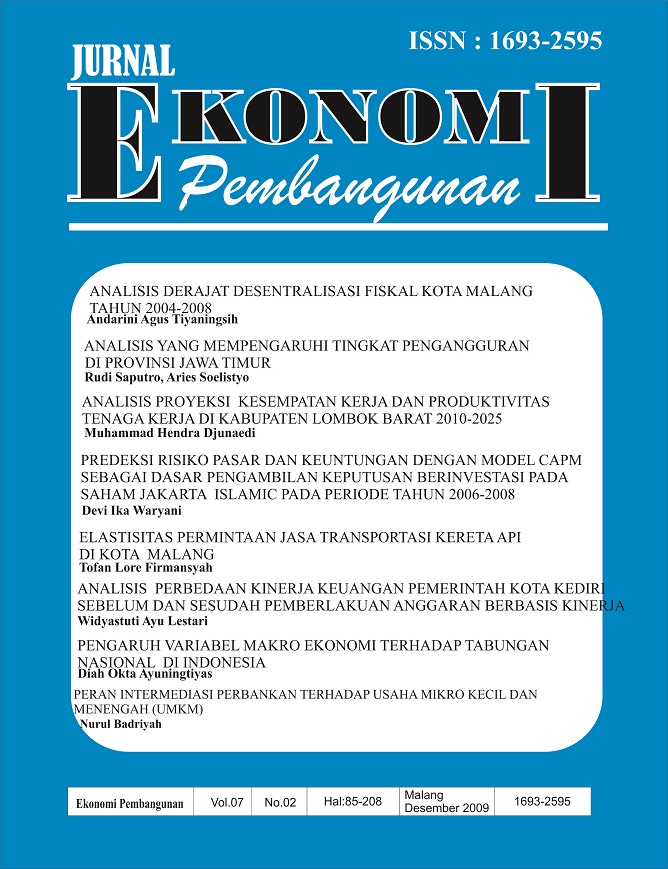ANALISIS DERAJAT DESENTRALISASI FISKAL KOTA MALANG TAHUN 2004-2008
DOI:
https://doi.org/10.22219/jep.v7i2.3586Keywords:
PAD, BHPB, SD, and TPDAbstract
The purpose of my research is to find desentralisasi degree fiscal of Malang city 2004-2008 years old. The analysis tools is desentralisasi degree fiscal include Ratio Pendapatan Asi Daerah (PAD) with Total Penerimaan Daerah (TPD), ratio Bagi Hasil Pajak dan Bukan Pajak (BHPBP) with Total Penerimaan Daerah (TPD) and ratio Sumabngan Daerah (SD) with Total Penerimaan Daerah (TPD). The result of ratio analysis PAD with TPD are 13,05%, the result of ratio analysis BHPBP with TPD are 9,00% and the result of ratio analysis SD withTPD are 8,94%. Such was the case the result of that analysis is Malang was not independent, because the biggest fund of central goverentment, and Pendapatan Asli Daerah (PAD) of Malang is low.Downloads
Download data is not yet available.
Downloads
Published
2016-10-05
Issue
Section
Journal
License
Authors who publish with Jurnal Ekonomi Pembangunan (JEP) agree to the following terms:
- For all articles published in Jurnal Ekonomi Pembangunan (JEP), copyright is retained by the authors. Authors permit the publisher to announce the work with conditions. When the manuscript is accepted for publication, the authors agree to the publishing right's automatic transfer to the publisher.
- Authors retain copyright and grant the journal right of first publication with the work simultaneously licensed under a Creative Commons Attribution-NonCommercial-ShareAlike 4.0 International License that allows others to share the work with an acknowledgment of the work's authorship and initial publication in this journal.
- Authors can enter into separate, additional contractual arrangements for the non-exclusive distribution of the journal's published version of the work (e.g., post it to an institutional repository or publish it in a book), with an acknowledgment of its initial publication in this journal.
- Authors are permitted and encouraged to post their work online (e.g., in institutional repositories or on their website) before and during the submission process, as it can lead to productive exchanges and earlier and greater citation of published work (See The Effect of Open Access).

This work is licensed under a Creative Commons Attribution-NonCommercial-ShareAlike 4.0 International License.






















